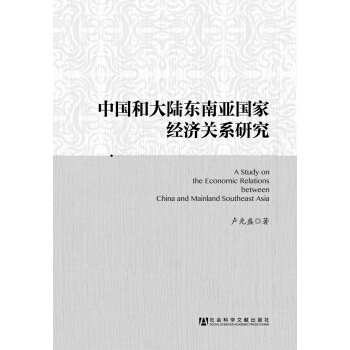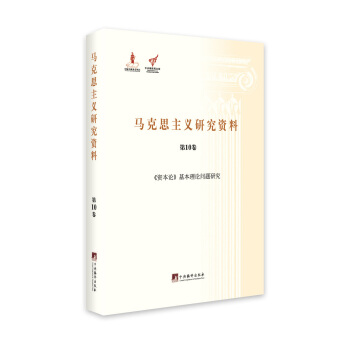![管理科学与工程经典教材:工程经济学(英文版·第5版) [Contemporary Engineering Economics(5th Edition)]](https://pic.qciss.net/11110270/rBEHZ1CI2YQIAAAAAADZ2ukBZ_IAACemABIh40AANny211.jpg)

具体描述
内容简介
《管理科学与工程经典教材:工程经济学(英文版·第5版)》深入浅出地介绍了现代工程师应必备的工程经济学专业基础知识:是针对各类工科学生的入门教材。全书内容丰富、逻辑严密,充分运用理工学生较强的数理基础,通过大量的运算实例阐述理论与方法。自1993年初版以来,及时吸纳最新研究成果,并随实践和计算手段的演进而不断修订更新,一直为众多高校采用。全书以学生为中心,以帮助学生掌握原理和方法为目的。探讨了很多当前的热点问题,引导读者运用所学知识解决现实世界中的问题。
本书配套中文版已推出,供读者参照阅读。
作者简介
钱.S.帕克(Chan S. Park),奥本大学教授。于佐治亚理工学院(Georgia Institute of Technology)获得工业工程博士学位。研究领域包括经济决策分析、实物期权与金融工程、能源经济学等。邵颖红,同济大学经济管理学院副教授,主要从事技术经济及管理专业领域的研究。主持和参与10多个国家级研究项目和若干政府和企业咨询项目。在《管理工程学报》、《数量经济与技术经济研究》等核心杂志发表文章20多篇。著书两部,主编和参编教材7部,代表性作品有《公共项目投融资分析》、《公共项目的经济评价与决策》、《工程经济学》等。
内页插图
目录
前言第1篇 财务决策基础
第1章 工程经济决策
第2章 利率和经济等值
第3章 学会理财之道
第2篇 企业和项目资产的投资评价
第4章 现值分析
第5章 年度等值分析
第6章 收益率分析
第3篇 项目现金流量分析
第7章 决策相关的成本概念
第8章 折旧和公司税
第9章 建立项目现金流量
第4篇 风险与不确定性处理
第10章 通货膨胀对现金流量的影响
第11章 项目风险和不确定性
第12章 实物期权分析
第5篇 工程经济学专题
第13章 更新决策
第14章 资本预算决策
第15章 服务部门的经济分析
精彩书摘
Decisions made during the engineering design phase of product development determinethe majority of the costs associated with the manufacturing of that product (some say that
this value may be as high as 85%). As design and manufacturing processes become more
complex, engineers are making decisions that involve money more than ever before. Thus,
the competent and successful engineer in the twenty-first century must have an improved
understanding of the principles of science, engineering, and economics, coupled with relevant
design experience. Increasingly, in the new world economy, successful businesses
will rely on engineers with such expertise.
Economic and design issues are inextricably linked in the product/service life cycle.
Therefore, one of my strongest motivations for writing this text was to bring the realities
of economics and engineering design into the classroom and to help students integrate
these issues when contemplating many engineering decisions. Of course my underlying
motivation for writing this book was not simply to address contemporary needs, but to
address as well the ageless goal of all educators: to help students to learn. Thus, thoroughness,
clarity, and accuracy of presentation of essential engineering economics were
my aim at every stage in the development of the text.
Although it contains little advanced math and few truly difficult concepts, the introductory
engineering economics course is often a curiously challenging one for the sophomores,
juniors, and seniors who take it. There are several likely explanations for this
difficulty.
1. The course is the student’s first analytical consideration of money (a resource with
which he or she may have had little direct contact beyond paying for tuition, housing,
food, and textbooks).
2. The emphasis on theory may obscure for the student the fact that the course aims,
among other things, to develop a very practical set of analytical tools for measuring
project worth. This is unfortunate since, at one time or another, virtually every
engineer—not to mention every individual—is responsible for the wise allocation
of limited financial resources.
3. The mixture of industrial, civil, mechanical, electrical, and manufacturing engineering,
and other undergraduates who take the course often fail to “see themselves”
in the skills the course and text are intended to foster. This is perhaps less
true for industrial engineering students, whom many texts take as their primary
audience, but other disciplines are often motivationally shortchanged by a text’s
lack of applications that appeal directly to them.
This text aims not only to provide sound and comprehensive coverage of the concepts of
engineering economics but also to address the difficulties of students outlined above, all
of which have their basis in inattentiveness to the practical concerns of engineering economics.
More specifically, this text has the following chief goals:
1. To build a thorough understanding of the theoretical and conceptual basis upon
which the practice of financial project analysis is built.
2. To satisfy the very practical needs of the engineer toward making informed financial
decisions when acting as a team member or project manager for an engineering
project.
3. To incorporate all critical decision-making tools—including the most contemporary,
computer-oriented ones that engineers bring to the task of making informed
financial decisions.
4. To appeal to the full range of engineering disciplines for which this course is often
required: industrial, civil, mechanical, electrical, computer, aerospace, chemical,
and manufacturing engineering, as well as engineering technology.
前言/序言
用户评价
我是一名对工程项目管理充满兴趣的学生,一直想找一本能够系统梳理工程经济学核心内容的教材。《工程经济学(第5版)》这本书,可以说完全满足了我的需求,甚至超出了我的期望。从目录的设置到内容的编排,都体现了作者深厚的学术功底和丰富的教学经验。开篇就点明了工程经济学在整个工程项目生命周期中的重要性,并循序渐进地引导读者进入各个关键领域。 书中对于“经济性评价”的讲解,条理清晰,逻辑严谨。它不仅仅是罗列计算方法,而是着重强调了评价的出发点、评价的依据以及评价的结果如何指导决策。我尤其欣赏它在讲解“成本估算”和“效益分析”时,区分了不同类型的成本(如固定成本、变动成本、机会成本)和效益(如直接效益、间接效益、隐性效益),并给出了相应的估算方法和考量因素。这让我在理解项目成本时,能够更加全面和深入,避免遗漏关键的经济要素。
评分作为一名在工程领域摸爬滚打了多年的专业人士,我一直觉得工程经济学是连接技术与商业的桥梁,而这本《工程经济学(第5版)》恰恰做到了这一点,而且做得非常出色。我个人尤其看重它对“投资决策”的分析,不仅仅停留在简单的理论层面,而是深入探讨了在实际工程中,决策者需要考虑的各种复杂因素。 书中关于“经济寿命”和“报废决策”的分析,让我对自己曾经遇到的一些设备更新换代的问题有了新的认识。它提供了量化的方法来评估设备在不同使用年限下的经济效益,以及何时进行更新换代才能实现整体效益的最大化。这种从宏观到微观、从理论到实践的贯穿,让这本书不仅仅是一本教材,更是一本实用的工作手册。它帮助我系统性地思考工程项目中的经济问题,从而做出更明智的决策。
评分坦白讲,一开始我拿到这本《工程经济学(第5版)》的时候,只是被它的“经典教材”和“第5版”的字样所吸引,以为只是一本更新迭代的版本。然而,阅读过程中,我惊喜地发现,它在内容深度和前沿性上,都给我带来了不小的触动。书中对“折旧”和“税收”等概念的处理,不仅仅是概念的解释,更是将其与实际的财务管理和税务筹划紧密联系起来。 特别是在探讨“投资项目评估”时,这本书非常细致地阐述了不同融资方式对项目经济效益的影响,包括股权融资、债权融资以及它们各自的优劣势。这对于我们理解资本结构对企业价值的影响,以及如何选择最优的融资方案,提供了非常实用的视角。而且,书中对“技术经济可行性研究”的论述,也更加强调了技术创新带来的经济效益,以及如何在技术选择中权衡经济成本和技术优势。
评分不得不说,初次接触这本《工程经济学(第5版)》的时候,我还有点担心它会不会过于理论化,脱离实际。然而,翻阅之后,我发现这种顾虑完全是多余的。这本书最大的亮点之一,就是它在理论阐述的同时,始终紧密联系着工程实践。书中大量的案例研究,涵盖了基础设施建设、制造业升级、能源开发等多个领域,这些案例的选择非常有代表性,而且对每一个案例的分析都详尽入微。 我特别喜欢它处理“时间价值”概念的方式。它不仅仅是简单地讲解折现率和复利,而是通过模拟不同投资回报的时间点,以及这些回报在不同折现率下的价值差异,让读者深刻体会到“现在的一块钱”和“未来的一块钱”之间的巨大区别。这种直观的理解,对于我们在工程项目规划和投资决策时,进行长远考虑,避免短视行为,有着至关重要的指导意义。而且,书中对技术进步和创新在工程经济学中的作用也进行了探讨,这在当前快速发展的科技环境下,显得尤为重要。
评分这本《工程经济学(第5版)》对我来说,真是一次意料之外的收获。我本来只是抱着了解一下工程项目经济评估的基本原理和方法的目的翻开的,没想到它展现出的深度和广度远远超出了我的预期。首先,书中对于各种经济评价指标的阐述,例如净现值、内部收益率、回收期等,不仅仅是简单地给出公式和定义,而是深入剖析了它们背后的逻辑和适用场景。作者通过大量的实际案例,将抽象的经济学概念具象化,让我能够清晰地理解在不同的工程决策中,这些指标是如何被应用来衡量项目可行性的。 更让我印象深刻的是,这本书并没有停留在传统的成本效益分析层面,而是非常注重将工程经济学与风险管理、不确定性分析相结合。它详细介绍了蒙特卡洛模拟、敏感性分析等工具,帮助读者理解如何在项目实施过程中识别、评估和应对潜在的经济风险。这一点对于我这个在实际工程中经常面临各种不确定性的从业者来说,无疑是宝贵的财富。书中的讲解清晰易懂,即使是初次接触这些复杂方法的读者,也能通过循序渐进的解释和详实的图表,逐步掌握。
评分(80%好p评)
评分财务决策基础
评分6条
评分(100%好评)
评分(83%好评)
评分折旧和公司税
评分技术创新管理
评分邵颖红,同济大学c经济管理学c院副教授c,主要从b事技术经济b及管理专业领域的研究。主持和参与10多个国家级研究项目和若e干?
评分技术创新管理
相关图书
本站所有内容均为互联网搜索引擎提供的公开搜索信息,本站不存储任何数据与内容,任何内容与数据均与本站无关,如有需要请联系相关搜索引擎包括但不限于百度,google,bing,sogou 等
© 2026 book.teaonline.club All Rights Reserved. 图书大百科 版权所有













![中国能源展望2030 [China Engery Outlook 2030] pdf epub mobi 电子书 下载](https://pic.qciss.net/11932850/573ee15aN1650cc0b.jpg)




![2016中国产业发展年度分析报告:需求变化的视角 [Annual Analysis Report on China's Industrial Development] pdf epub mobi 电子书 下载](https://pic.qciss.net/12159166/58f0a4dcNa6b272d2.jpg)

![转变参与:私人利益与公共行动/现代政治经济学前沿译丛 [Shifting Involvements:Private Interest and Public Action] pdf epub mobi 电子书 下载](https://pic.qciss.net/12270884/5a40a6c9N9432e857.jpg)